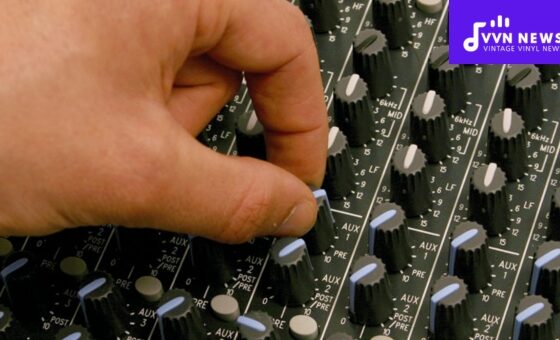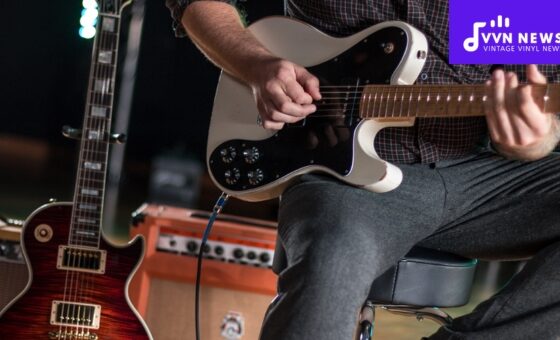The magic of music lies in the diverse sounds it can produce, which can transport us to different spaces and times.
One fundamental sound feature that contributes to this auditory transport is reverb. The 14 types of reverb, each with its unique characteristics, have the power to shape, elevate, and transform the sonic landscapes we create.
Understanding these types can add depth, dimension, and dynamism to your musical compositions or audio projects.
As a music enthusiast or audio professional, you’ve likely come across the term ‘reverb’, short for reverberation.
It’s an ingredient that adds spice to your sonic buffet. From spaces as tight as small rooms to those as cavernous as grand cathedrals, reverb has an uncanny ability to replicate acoustic environments profoundly and convincingly.
So let’s embark on this exciting journey of understanding these 14 types of reverb better!
14 Types Of Reverb: Transform Your Sound With These Options
Reverb is a unique and multi-faceted sound tool that offers boundless opportunities to add depth and dimension to music.
Here, we’ll delve into the first two of those 14 types from our list – plate and acoustic reverbs – exploring what makes them distinct.
1. Plate Reverb
First, you may ask yourself, “What exactly is Plate Reverb?” Invented in the early 1950s, this type of reverb earned its name from the large metal plate that was historically used to create it.
The device would send an audio signal through coils attached to the plate, causing it to vibrate and produce a wash of smooth reverb.
One potent characteristic of plate reverb is its ability to sound both dense and bright simultaneously – a rarity among reverbs.
It’s frequently favored in studio recordings because it can add harmonic richness without overwhelming or diluting the original sound.
As a result, plate reverb can significantly enhance vocals or lead instruments without causing them to drown out in the mix completely.
Also Read: Plate Reverb [What It Is And How To Use It In 2025]
2. Acoustic Reverbs
Moving on from hefty vibrating plates into open space, next up is Acoustic Reverbs.
Acoustic refers not to guitars but to natural spaces such as rooms, halls, or canyons.
When sound waves hit surfaces within these environments, they bounce back at different sizes and speeds based on factors like surface texture and distance.
Speaking more technically, acoustic reverb involves two main components: early reflections (immediate echoes bouncing off nearby surfaces) and a subsequent reverberation tail.
The first part helps our brain identify room size, while the second affects perceived shape.
A well-executed acoustic reverb can simulate various natural environments successfully.
For instance, a ‘room’ acoustic reverb simulates small enclosed spaces with sharp reflections; ‘hall’ presets might replicate long, diffused echoes of magnificent halls; ‘chamber’ reverb settings could mimic the sounds of large, reverberant spaces like warehouses.
Also Read: The Acoustic Treatment Guide For Panels & Foam
3. Fender 4-Spring 8 Ohm Spring Reverb Unit
The Fender 4-Spring 8 Ohm Spring Reverb Unit is an heirloom in the music world.
This reverb unit uses the physical properties of large springs to produce a warm, vintage echo.
The sounds we’ve come to associate with guitar gods like Dick Dale or Jimi Hendrix are often due to the distinct ‘drip’ or ‘splash’ sound of a spring reverb unit, specifically this Fender model.
In such units, audio signals are sent down a transducer at one end of each spring, which shakes the spring.
When the vibrations reach the other end, they’re picked up by another transducer and converted back into an audio signal.
Noticeably characterized by their rich, warm, and somewhat funky tails due to the inharmonious resonance within each spring, they are mainly at home in genres like surf rock and reggae.
4. Hall Reverbs
Hall reverb is perhaps one of the most used types. As its name suggests, hall reverb mimics large spaces like concert halls or cathedrals, renowned for their high ceilings and vast spaces designed for music performances.
Hall presets generally have longer decay times (upwards of 1 second), with diffused early reflections creating a sense of grandeur and openness.
It is ideal for orchestral or symphony mixes where you desire space but still need clarity from individual instruments – violins don’t get drowned out here!
5. Gated Reverbs
Shaking things up from natural sound locales is Gated reverb. This style was engendered during the ’80s as an innovative way to give drums a big punchy sound without swamping the mix with lengthy decay times.
It’s about applying a noise gate (a dynamic effect that cuts off any sound below a specific volume) to a reverb signal.
The reverb cut short unnaturally, giving the ‘gated’ effect, famous for its use in Phil Collins’ seminal hit “In The Air Tonight.”
This style can add ambiance and depth while ensuring your drums or vocals sit powerfully up front in the mix.
Also Read: What Is Gated Reverb? 2025 [How To Create Gated Reverb Drums]
6. Nonlinear Reverbs
Nonlinear reverbs step entirely into the realm of sound design. They produce an odd, reverse-like decay pattern where it builds in volume over time rather than naturally fading out – the process is anything but straightforward or linear!
A common usage of these reverbs (also called reverse reverbs) is an escalating pre-echo effect leading into significant moments in a song – think of those hushing whispers you hear right before that drop!
Nonlinear styles offer an intriguing palette for ventures beyond natural spatial imitations.
7. Digital Reverb
Embrace the myriad possibilities emanating from the digital realm with Digital Reverb.
As a product of our technology-rich era, it takes on the task of synthetically simulating acoustic spaces.
It achieves this through a complex maze of delay lines called ‘tapped delay lines,’ each designed to mimic early reflections and subsequent diffusions produced in real-world environments.
Digital reverb offers a lot under its hood: customization, adjustment flexibility, and various algorithms that convincingly emulate different natural and artificial spaces.
Its ability to provide complete control over reverb parameters is why it’s widely favored in modern music production.
8. Convolution Reverb
Venturing further down the path of technological advancements comes Convolution Reverb, an ultra-realistic digital reverb technique that uses sampled impulse responses (IRs) from actual rooms or spaces – think concert halls, caverns, or even car interiors!
These IRs are then mathematically convolved with the incoming audio signal to create compelling acoustic simulations.
Convolution reverb is known for its exceptional accuracy – almost like “aurally photographing” an environment – but this comes at a cost.
It demands significant CPU power and offers less parameter control than algorithmic digital reverb.
9. Ambience Reverb
Ambience Reverb – creating atmospheres with just the meager addition of early reflections.
It’s akin to adding sonic shadows around your direct sounds. The omission of long reverb tails in ambience reverb has specific benefits, including maintaining clarity in the mix and adding depth without drowning instruments.
For instance, ambience reverb is often used in film scores or game soundtracks to create spatial sensations in stereo or surround fields.
It’s less common in popular music production but has its place where clarity and space throughout the sonic field are paramount.
From moving audio coils on massive plates to complex algorithms producing lifelike reverberations, these reverb types have something unique to offer every musician or producer.
Understanding their characteristics can unlock countless possibilities for crafting richer and more nuanced soundscapes in any musical project you undertake.
10. Spring Reverbs
Derived from the authentic bouncing sound of springs, spring reverbs are an intrinsic part of vintage guitar amplifiers like the Fender Twin Reverb or Hammond organ speakers.
The reverb utilizes a transducer at one end of a spring to create vibrations and another at the opposite end to capture them.
Because of its natural imperfections and distinctive twang, spring reverb is indispensable for anyone seeking that authentic vintage audio color.
While these reverbs are brilliant for embellishing guitar tones, they can be equally potent when applied creatively to vocals, synths, or rhythm sections.
They tend to offer less detail than other reverb types and instead provide a distinct warm bounce usually associated with retro genres like surf rock or blues.
11. Church Reverb
Among all types of reverb, there’s one cloaked in mystique – the church reverb.
Church reverbs perfectly replicate the serene atmosphere within ecclesiastical buildings known for their unique acoustic structures.
In audio engineering terms, church reverb falls under the ‘large hall’ presets in many digital devices.
But what sets it apart is how it manages to maintain clarity while providing a vast sense of depth and space- synonymous with towering ceilings and long reflective stone corridors typical in churches.
Whether you’re designing heavenly choral arrangements or want to experiment with ethereal pads on a synth-pop track, church reverb can add that extra touch of transcendence.
12. Reverse Echo
As fascinating as it sounds, reverse echo – sometimes called ‘reverse reverb’ or ‘pre-echo,’ is a type of backward effect where the echo typically ‘swells up’ toward an incoming sound – rather than following after it.
Jimmy Page first made it famous on Led Zeppelin’s “Whole Lotta Love.”
This off-beat echo can add intrigue, increase anticipation before impactful moments in your track, or serve as a transitional element. These are usually readily available in most DAWs (digital audio workstations) like Logic Pro or Ableton Live.
Also Read: What Is Reverse Reverb? [How To Create Backwards Echo Effect?]
13. Mechanical Reverbs
The last one on our list is the mechanical reverb. This type of reverb has a lot to do with historical audio engineering feats.
Mechanical reverb utilizes physical means such as echo chambers, plates, and springs – devices used before the digital era of audio production.
Despite noises, colorations, and other imperfections associated with handling physical hardware, mechanical reverb has a unique charm that’s impossible to replicate digitally.
Today, these reverb still occupy an indispensable position in studios worldwide for their authentic timbre and signature sonics.
FAQs About reverb
What is reverb in audio production?
Reverb, or reverberation, is the echo or ambience created when a sound or signal is reflected, causing numerous reflections to build up and then decay as the surfaces of objects absorb the sound in the space.
Is plate reverb still used today?
Yes, plate reverb is widely used in modern music production, both in its original hardware form and through digital emulations.
How does acoustic reverb differ from other types?
Acoustic reverb simulates the natural sound reflections within various environments, ranging from small rooms to large chambers or halls.
How can I use different types of reverb in my music production?
Different reverbs are best suited for other applications. For instance, using a hall or church reverb can help to create a sense of grandeur and depth, while plate or spring reverbs might be used for their unique timbral characteristics. The key is to experiment and find what works best for your music.
Are there any must-know tips when using reverb?
One important tip is not to overdo it – too much reverb can muddy your mix. Also, investing time in understanding different reverb types will significantly help enhance your sonic palette.
Conclusion
In the end, understanding reverb and its intricate types, like the Plate Reverb or distinct Acoustic Reverbs, requires a keen ear, patience, and practice.
Developing a deep knowledge of this sound manipulation tool can drastically elevate your audio projects, bringing soundscapes to life in captivating ways.
“The world of reverb,” as I often say, “is not just about technicality, but essentially an immersive exploration of sensory indulgence.” After all, music rides on nuances.








